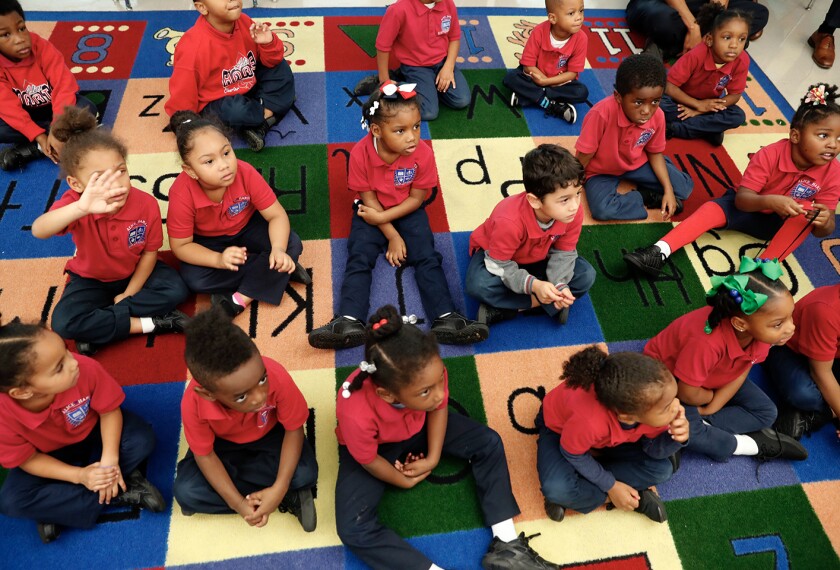State and federal policymakers should give more backing to the connection between high-quality care for infants and toddlers and their preparation for school, a report released last week concludes.
The report, “Caring for Infants and Toddlers,” is available from David and Lucille Packard Foundation.
“Children from birth to 3 shouldn’t be forgotten in discussions about school readiness,” said Dr. Richard Behrman, a pediatrician and the editor in chief of the journal The Future of Children, which published the report. The journal is supported by the David and Lucile Packard Foundation.
“We must ensure that parents have time to spend with their babies and that child-care providers are well-trained and well-paid,” Mr. Behrman said.
The report recommends that the federal government extend the protections of the Family and Medical Leave Act—which requires large employers to provide 12 weeks of unpaid maternity or paternity leave to their workers—to employees of midsize and small businesses. In addition, it urges an expansion of state and federal funding for programs serving infants and toddlers.
In another recommendation, the report suggests that states permit welfare recipients to stay at home with their infants until they are at least 6 months old. It adds that providing welfare mothers a one-year exemption from working would be even “more appropriate, given the disproportionate difficulties faced by poor, single mothers of infants.” (“Experts Debate Welfare Reform’s Impact on Children,” this issue.)
The Packard Foundation released the report, “Caring for Infants and Toddlers,” last week at a Washington press briefing at a National Governors Association conference that promoted early-childhood development.
Also last week, the NGA’s Center for Best Practices, along with Zero to Three, a Washington-based nonprofit organization focused on the healthy development of infants and toddlers, announced the formation of an 18-month fellowship for people who want to learn more about how to improve states’ early-childhood policies.
The Link to Learning
The Packard press briefing featured early-childhood researchers who had written chapters for the report. Those researchers emphasized that it is crucial for every infant and toddler to be part of a loving relationship.
A child’s motivation to learn “originates in the kind of relationship children have with caregivers,” said Ross A. Thompson, a professor of psychology at the University of Nebraska-Lincoln.
Psychological and social factors play an important role in a child’s success in kindergarten, he added. He said that he once heard a kindergarten teacher sum up the challenge of her work by saying, “The kids are bad and sad—it’s not that they can’t add.”
Jane Knitzer, the deputy director of the National Center for Children in Poverty and the Mailman School of Public Health at Columbia University, urged federal and state governments to increase the amount they’re spending on programs to reach very young children, such as Early Head Start.
She applauded the fact that the number of states and jurisdictions financing programs for infants and toddlers has risen since 1996 from 18 to 31. Yet, she said, federal and state governments need to do more to reach young children in the nation’s most vulnerable families.
“We are living in a fantasy world,” she said, “if we think those children will enter school ready to learn.”
Shift in Care
The 157-page report also found that, increasingly, the nation’s infants and toddlers are being cared for by people other than their parents.
Sixty-one percent of mothers of children under the age 3 were employed in 2000, up from 34 percent in 1975. Only 27 percent of infants and toddlers whose mothers work have a parent as their primary caregiver, according to Urban Institute data cited in the report. The primary caregivers of the remaining 73 percent are child-care centers, family child care, nannies, or relatives.
Experts at the Packard Foundation press briefing decried the limited government financial support for child care in the United States, compared with many other industrialized nations.
One of the obstacles to gaining more substantial public funding for child care is “an assumption that it’s the family’s responsibility,” Ms. Knitzer said.




